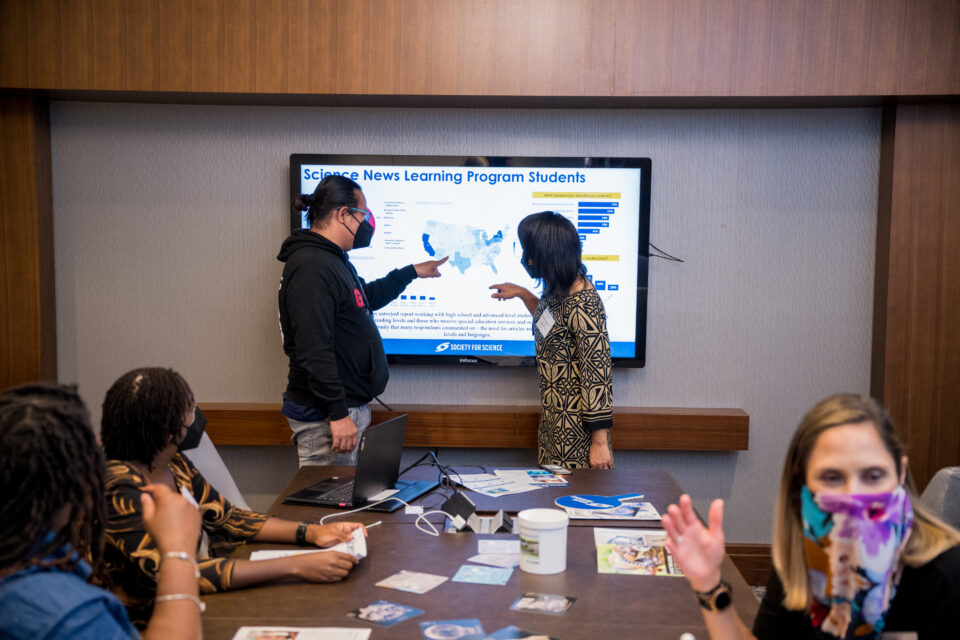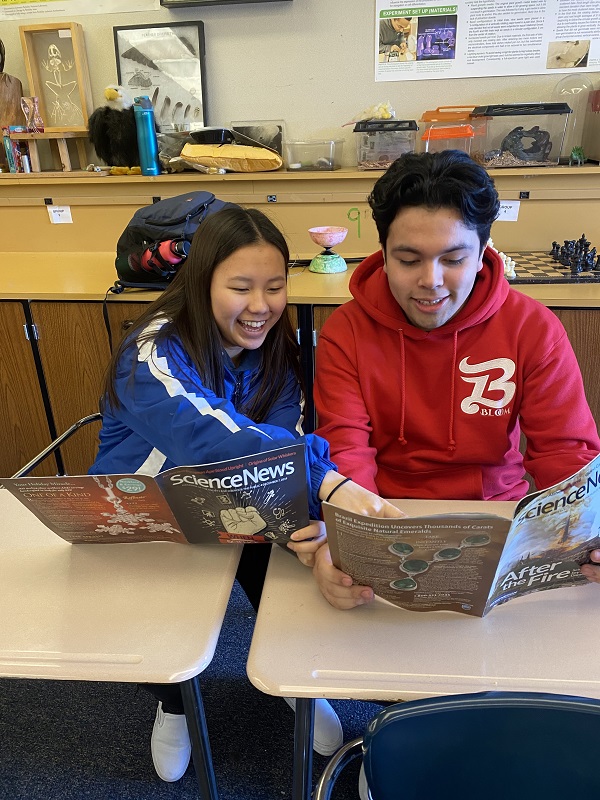Science News, Science News Learning, STEM Outreach
Teachers report that Science News Learning provides credible, real-world examples of science

Educators surveyed by Society for Science about Science News Learning — a program that helps teaching with Science News journalism become a regular practice in schools across the country — overwhelmingly reported that Science News Learning delivers current, credible real-world examples of science to their students. Out of 1,200+ respondents, 98% said they would recommend the program to a colleague.
Science News Learning strengthens science literacy by providing the resources and support educators need to address student achievement gaps in STEM. The program resources make STEM learning more meaningful and inspiring to students by focusing on real-world problems and the latest research across scientific fields, while increasing awareness of multiple STEM disciplines. The program brings print copies of Science News directly to classrooms, gives teachers and students access to 100 years of archives of Science News online, and provides educators with professional development opportunities and access to a digital library of hundreds of standards-aligned lesson plans. Over 90% of survey respondents reported that they are either already using or plan to use Science News Learning resources in their classrooms. 85% of teachers reported that they use the resources frequently.
The educators surveyed were part of the 2021–2022 program year, which was available to over 5,400 schools across the United States, including 95 full districts, providing Science News digital access to more than 5 million students and 17,000 educators. 62% of the program schools were Title I Eligible and 73% of educators report that they work with students who are traditionally underserved in STEM education and careers. Overall, 82% of schools renewed their program enrollment for the 2022-2023 school year.
Educators surveyed are overwhelmingly positive about the program; they are seeing results in their students’ curiosity and achievement in STEM. When asked whether the program is useful in their students’ learning, a whopping 99% said yes, and when asked if the program was useful in their teaching, 98% said yes.
As part of the survey, educators shared how Science News Learning helps meet their classroom goals. In addition to the 68% of educators who expressed using the resources as real-world applications of science, 53% said that the program helps improve their students’ science literacy skills and 41% said the resources helped inspire research project ideas for their students. 73% of teachers report that the resources give them much-needed background knowledge about current advances in science and technology.

Each school year, the program produces about 50 unique lesson plans all tied to articles within a current Science News issue during the year. Educators reported frequent use of lesson plans and expressed their appreciation for quick and effective activities that align with standards, enhancing their teaching and saving them time. An average of over 4,500 unique users engaged with each weekly e-newsletter that links directly to the most recent lesson plans. During the school year, there were over 109,000 total unique page views per month on Science News Learning Educator Resource pages, including over 32,000 unique pageviews on more than 160 different lesson plans and over 15,000 unique views on search.
The print magazines are directly addressed to a lead science teacher at most schools. These educators shared their appreciation for receiving the print magazine on the survey. When asked how the magazines are used in schools, 77% shared that they ensure that Science News is kept in a place where students have access, and 51% told the Society that they copy or print specific articles to give to students. An impressive 42% of teachers said they read the magazine cover-to-cover themselves. Program educators are also exposed to and utilize Science News Explores. When asked which publication is used more frequently, 48% of teachers report using Science News more frequently, 23% report using Science News Explores more frequently and 19% use both publications with the same frequency.
Educators who are interested in learning more about Science News Learning should fill out this form. Additional resources about Science News Learning are available here.


